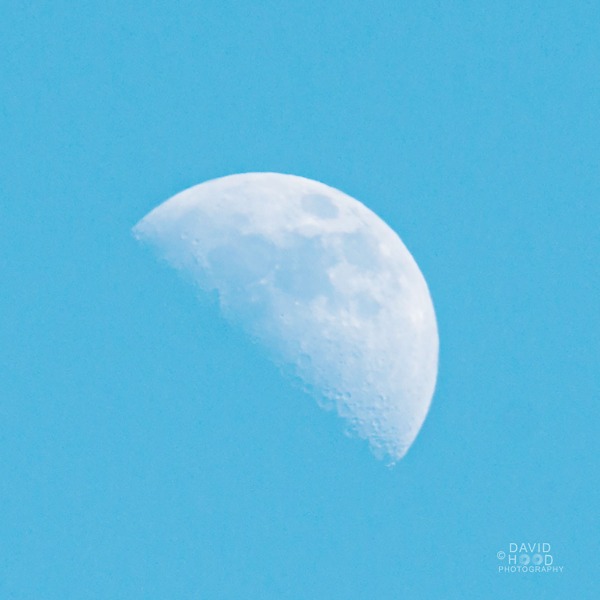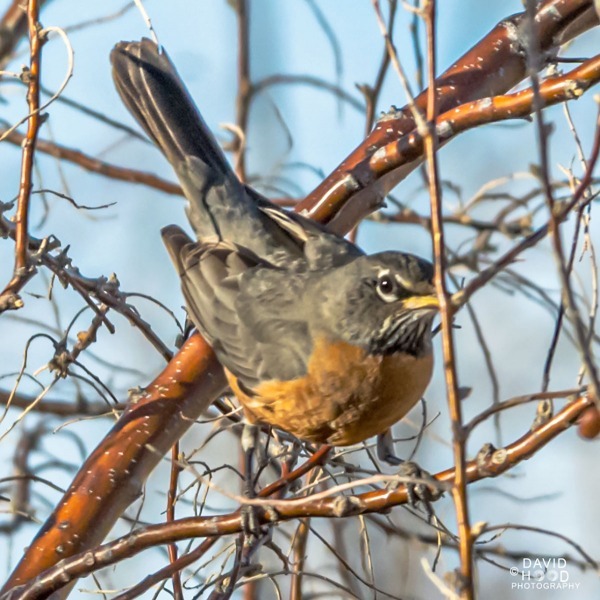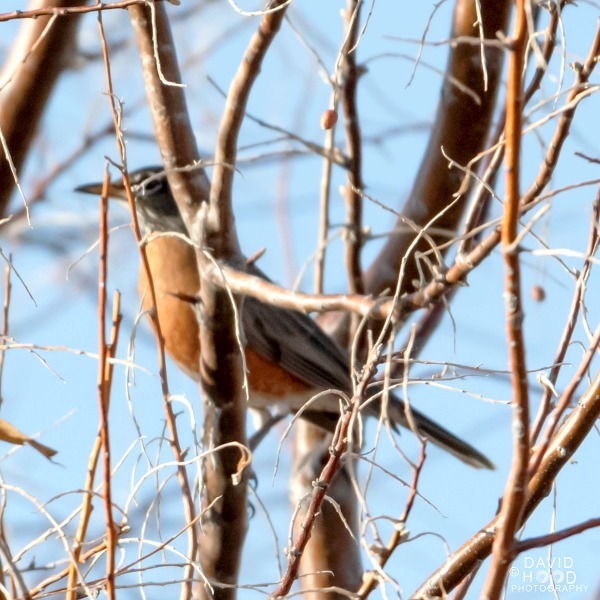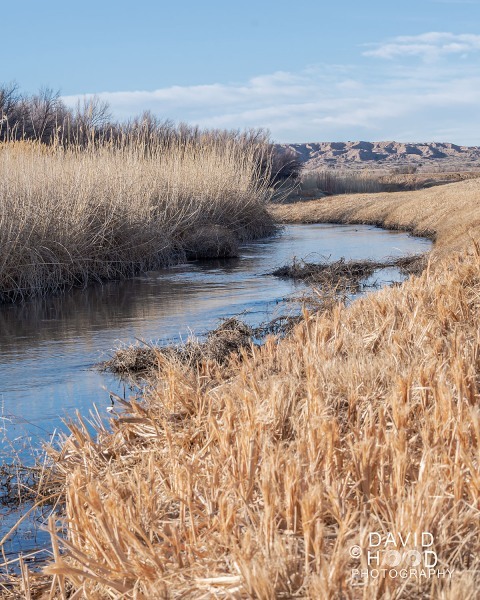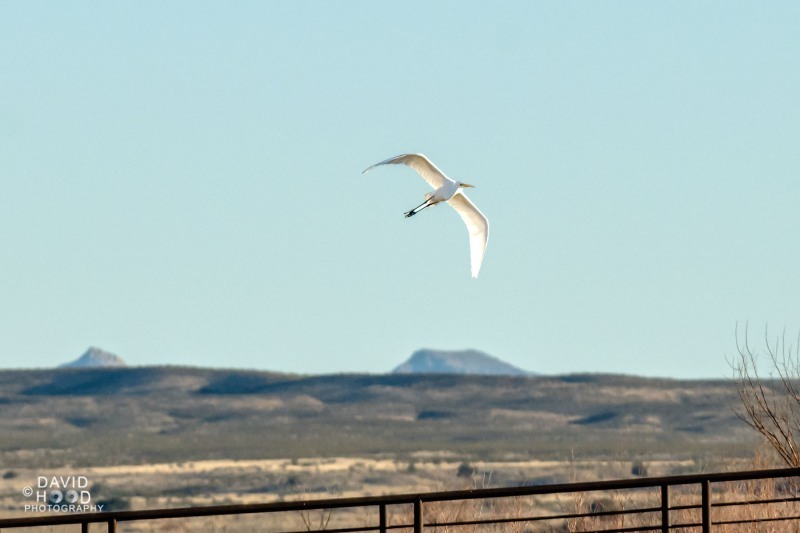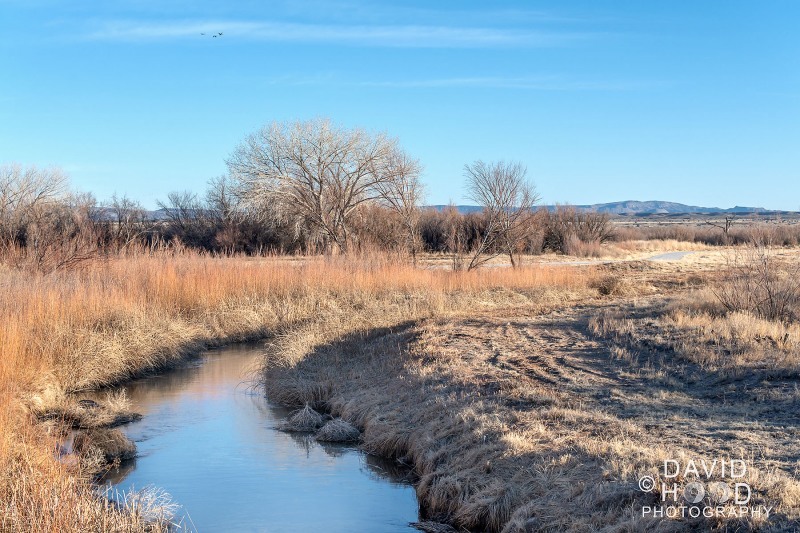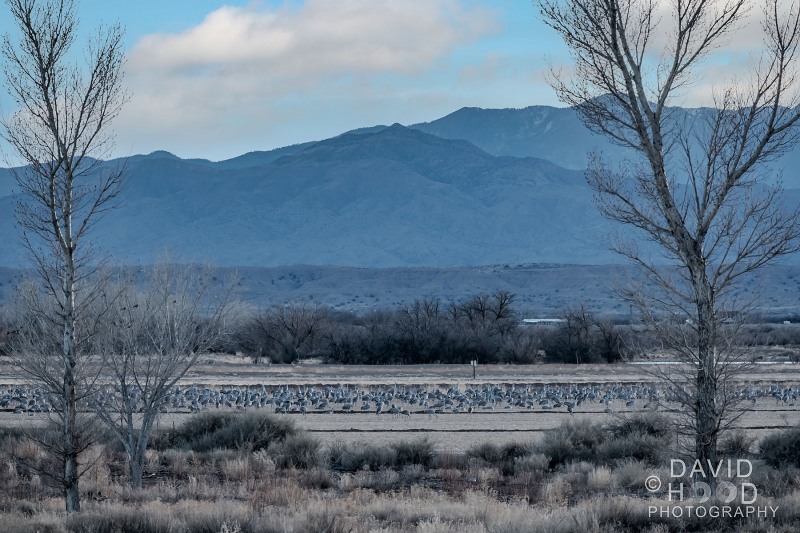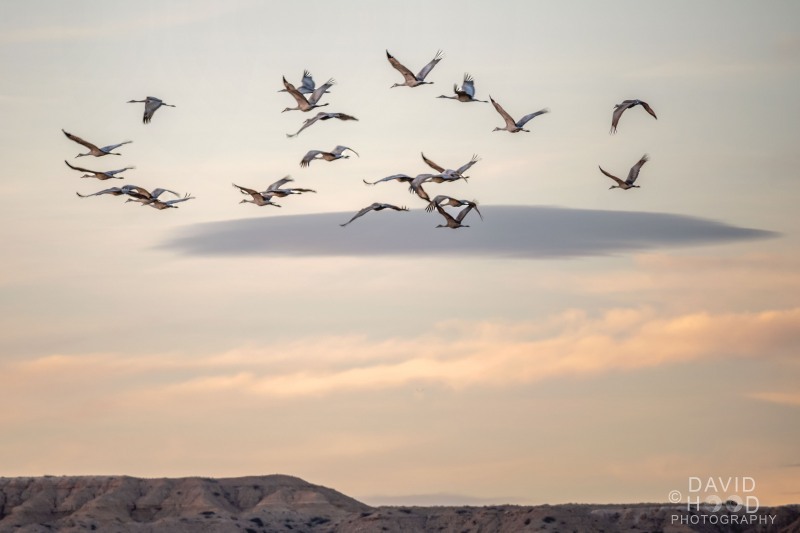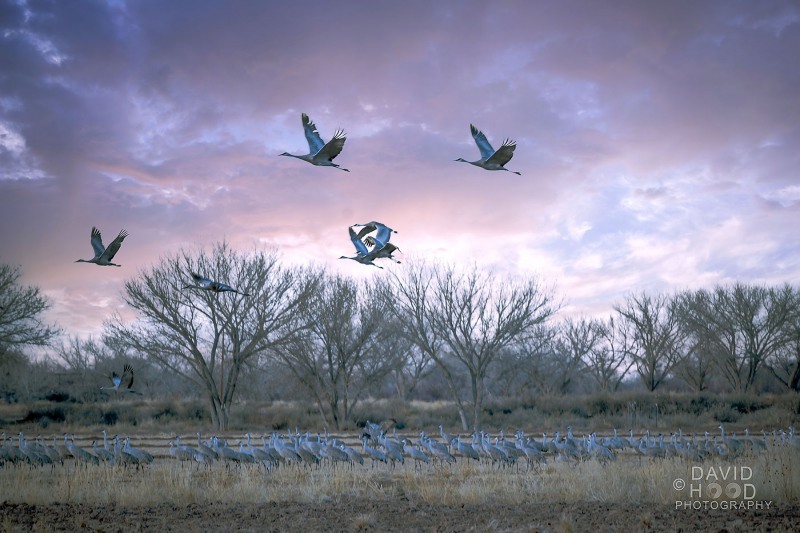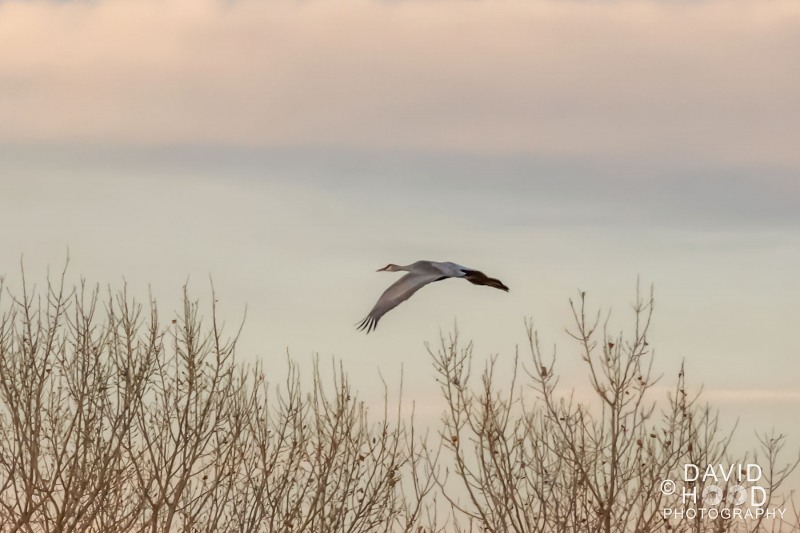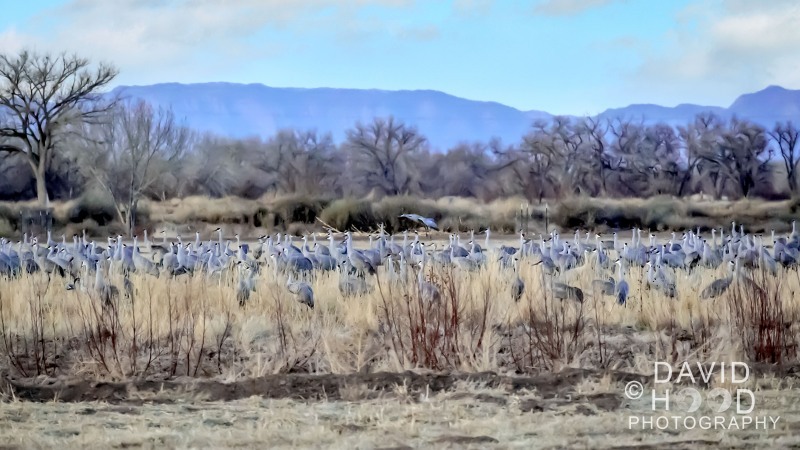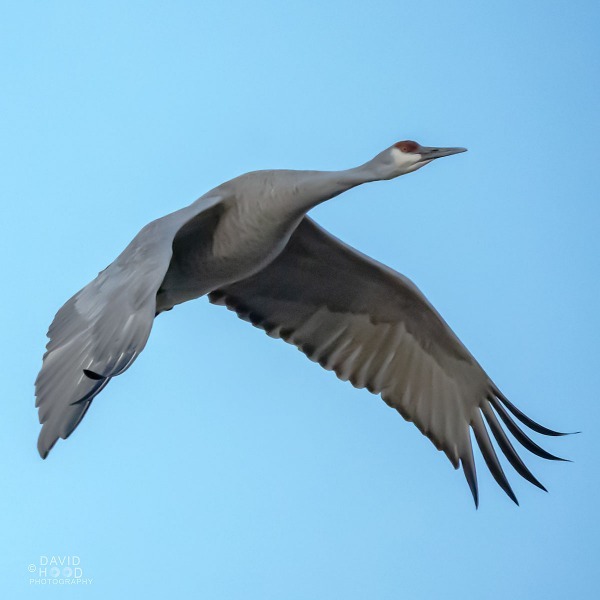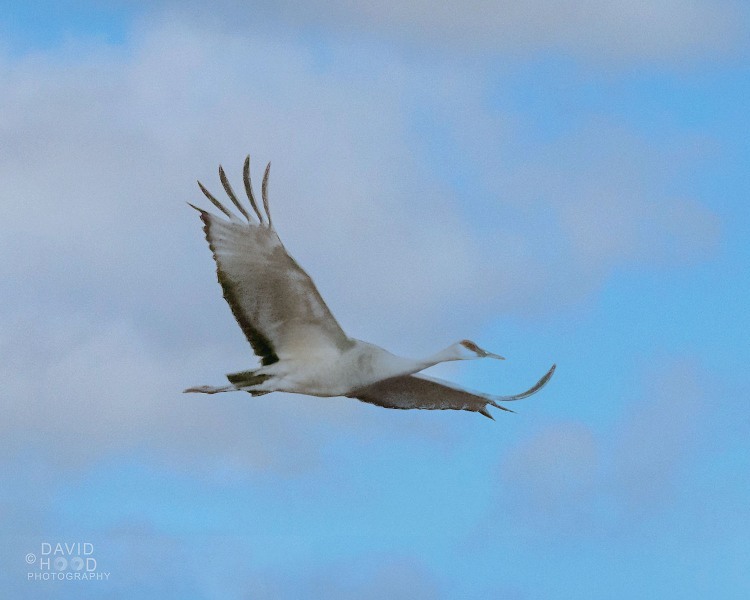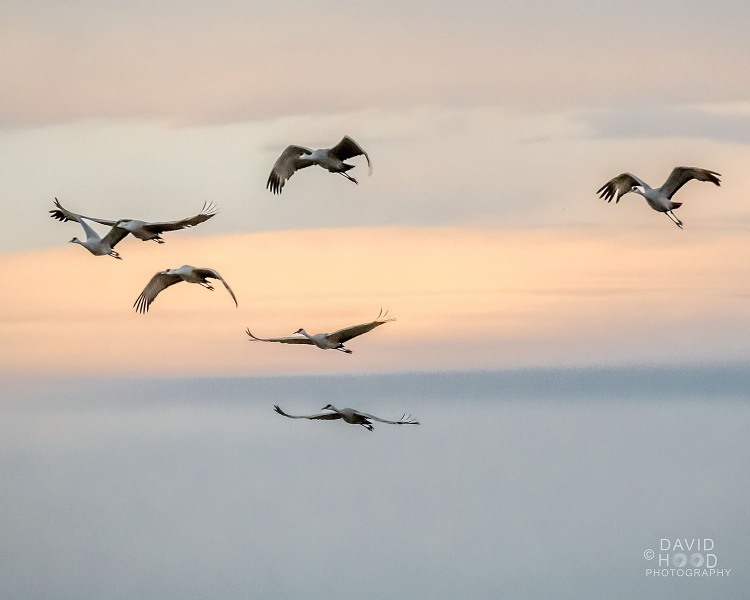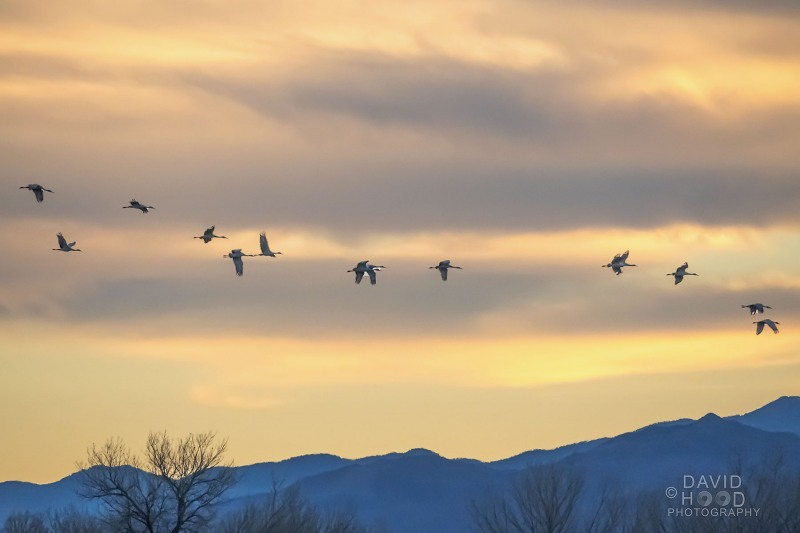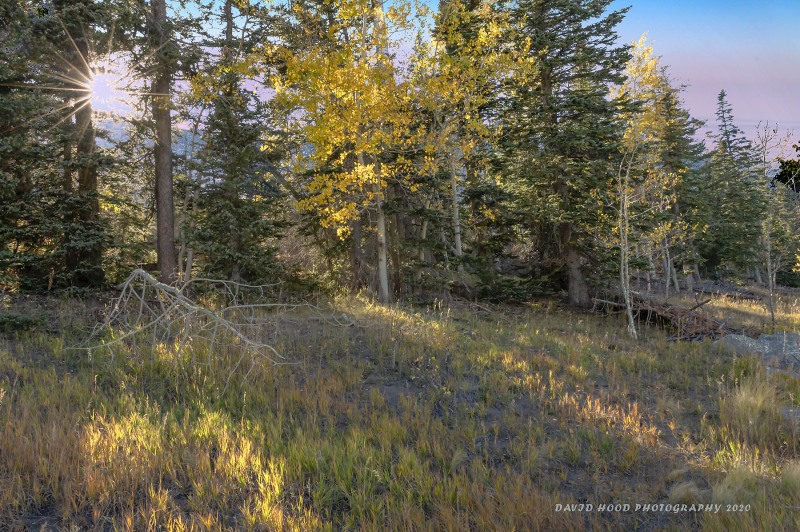In its orbit around the Earth, the moon was far enough away from the sun today to make its sunlit surface visible during daylight. Shot handheld with Nikon Z50 fitted with 50-250mm lens at 250mm, aperture f/11, shutter speed 1/200 second, and ISO 200.
In my previous post on 3 February, I concluded by saying that fewer “non-keeper” photos due to autofocus issues was a challenge. This post reports on steps that I took to improve the speed and accuracy of autofocus on my new (to me) Nikon D50 outfitted with the 50-250mm zoom lens. First I installed the latest firmware update on my camera, and then I practiced shots using the Wide-Area Large autofocus setting. Most of the birds in flight (BIF) photos were shot with a shutter speed of 1/2000, aperture of f/8, and ISO set to auto. As the ambient light dimmed just before sunset, this resulted in a rather high ISO of 12,800 for some photos – but the resulting photos are of acceptable quality at normal print size. Post processing was done with Adobe Camera Raw and Photoshop CC.
Introduction
My primary camera is a full frame Nikon Z6 mirrorless camera which I use with the mirrorless S mount Nikon 24-70 f/2.8 zoom lens and my F mount Nikon 70-200 f/2.8 zoom lens (via Nikon’s FTZ adapter). This is a great combination for paid gigs, but I wanted something smaller and lighter for a backup camera and personal use. I chose the Nikon Z50 crop sensor mirrorless camera together with the 2 currently available S mount crop sensor lenses – the 16-50mm zoom and the 50-250mm zoom. I decided to try out my Z50 and 50-250mm lens where I could put it through its paces on my first ever wildlife shoot.
Location
I selected the Bernardo Wildlife Area in Central New Mexico due to its proximity to Albuquerque and easy access from IH 25, and the fact that it’s a sanctuary for Sandhill Cranes. Sandhill Cranes are related to Whooping Cranes, but are smaller (4 feet in height; 6-1/2 feet wingspan). I chose a late afternoon time because the cranes are more likely to be in flight just after sunrise and and just before sunset.
Preparation
Wildlife shooting is a photography venue unto itself, and I knew that there would be a steep learning curve, especially with camera gear that I hadn’t yet really learned to use to its full advantage. But one of the things I love about photography is that you never know it all, and there’s always new techniques and skills to be learned. My study of wildlife photography led me to a very helpful You Tube tutorial by Steve Perry entitled Nikon Mirrorless Performance and Action Tips.
Suggestions
I thoroughly enjoyed my first experience with wildlife photography and look forward to seeking more opportunities to practice and improve my skills. For those like me that are new to this venue, I’ll pass along a few suggestions.
Shoot in Manual Mode. Use a shutter speed appropriate for the size of the bird and the speed of the wing flaps. 1/1200 is sufficient for large birds like the cranes, but 1/3200 may be required for smaller birds like humming birds. Use apertures smaller that f/5.6 to improve depth of field for those times when autofocus misses the mark. Since the ambient light can change quickly, set ISO to Auto.
Challenges
Autofocus can be problematic, especially where the bird is flying close to trees or brush. I used the Dynamic Area Autofocus in AF-C (continuous) mode and back button focus (camera menu f2 control set to use the back button AE/AF L for focus instead of the 1/2 press shutter). The next time out, I will see if I get more keepers using the Wide Area or Spot focus settings.
David Hood #Capture the Memories Found in Travel and Life
Email: d300dave@gmail.com
Earlier this month I was pleased to learn that ViewBug named me a Top Creator, so I was doubly pleased to learn today that ViewBug awarded this photo their Treasure Award. It’s always nice to be recognized by your peers.
#Capture the Memories Found in Travel and Life
Email: d300dave@gmail.com
On occasion I envision a photo that I’d like to create, but am unable to do so because of time of day, ambient lighting, or weather conditions. For example, I shot the 1st photo in early November about mid-day while on a photo walk with a family member. After basic editing in Adobe Camera Raw and Photoshop I was happy with the results, but wanted a photo with a more dramatic look.
With additional Photoshop editing (2nd photo) I was able to increase the drama. I added a new layer to replace the sky with a sunset – taking care to make sure that the light was coming from the same direction as the original in order to maintain a realistic look. I then copied that layer and flipped the copied layer vertically to create a mirror image of the sky into the water in the foreground – again to create a realistic reflection. To complete the process I used the gradient tool to blend the reflection with the rest of the photo; finally, I reduced the opacity of the blend to taste.
It was reassuring to learn that each version of the photo has received ViewBug peer awards. Photography is an art form, and it’s to be expected that an artist’s work may be appreciated by some and not by others. But manipulating the photo canvas is so much easier in this digital age than it was back in the day of the darkroom. I urge others with a creative urge to experiment with creating photo composites.
Capture the Memories Found in Travel and Life
Email: d300dave@gmail.com
With clear weather last evening, Barbara and I headed to Elena Gallegos Open Space overlooking Albuquerque from the foothills of the Sandia Mountains. We chose this location to capture the “Christmas Star”, so named because the conjunction of planets Jupiter and Saturn appear so close together on 21 December that they appear to be a large star. The view to the planets is to the Southwest, the same as the view of the city of Albuquerque.
The 1st photo is the general view of the shoot location using 2 bracketed exposures – one for the foreground at 1/16th second shutter, and one for the sky at 1/160th second. Nikon Z6, Nikon 24-70 lens at 24 mm, manual mode, ISO 400, aperture f/4.
The 2nd photo shows the conjunction of the stars approximately as seen by the naked eye. It too was captured with my 24-70 zoom lens set at 33mm. Exposure settings were ISO 100, aperture f/2.8, and shutter speed 1/2 second.
The 3rd photo was taken with the longest focal length lens that I own, a Nikon f/2.8 70-200 zoom lens at 200mm. Exposure settings were ISO 1000, aperture f/2.8, and shutter speed 3 seconds. Even with a 200mm lens, the planets appear as small dots in the viewfinder, which makes focusing very difficult. And even though the planets appear to be close together, in reality they are still 450 million miles apart, so it is virtually impossible to obtain a sharp focus on both Jupiter’s moons and Saturn’s rings in the same photograph.
It was an enjoyable evening and another opportunity to Capture the Memories Found in Travel and Life.
The 3rd photo
Albuquerque home prices are up 15% from last November. If you’re considering the sale of your home, especially during this holiday period, I commend this post by Julia Reading entitled 7 Tips for Selling Your Home During the Holidays to your reading.
https://www.redfin.com/blog/selling-your-home-during-the-holidays/
Professional color balanced and geometrically corrected photos capturing the best features of your house will increase sales traffic, reduce time on market, and help you achieve your target selling price. Please call me if I can help.
David Hood, dba David Hood Photography, Albuquerque, NM
Mobile (210) 422-0572 Email d300dave@gmail.com
I was excited to learn that the newest version of Photoshop CC has added a new function for sky replacement. Previous to this change, my experience was that sky replacement was an arduous and often disappointing process. Now you simply open your photo in Photoshop, select Edit/Sky Replacement, and then select from several choices such as blue skies, spectacular skies and sunsets. It’s that easy, and its use of artificial intelligence software does a good job of masking around difficult selections like tree branches that proved so difficult before this update. By way of demonstration, the photo on the left is the original photo, and the one on the right includes a sunset sky replacement.
Capture the Wonders Found in Travel and Life
Email: d300dave@gmail.com
I teach my students that before worrying about the technical issues of capturing a photo, they should first envision the “look” of the photo they’d like to capture – things like the composition, the lighting, and where the viewers eyes should be drawn to. Once the shot is envisioned, the camera angle, lens selection, exposure settings and flash setup (if any) will logically follow.
But sometimes there are circumstances when the envisioned shot is impossible to capture in just one photo – such was the case in the photo below. I envisioned capturing the Aspen trees covered with gold leaves against the background of an adjacent mountain. Everything fell into place except for one thing – the Aspen trees at that location were practically bare of leaves!
Challenge accepted – I decided to combine two different photos. Using Photoshop I selected a photo of the Aspens covered with leaves and combined it with a photo of the mountain. Creating composite photos can be tricky because the light in both photos has to be coming from the same direction. The resultant photo captures the 3 things I envisioned, a star like sunburst, golden leaves on Aspen trees, and a mountain in the background. Not perfect by any means, but close to what I’d hoped for.

